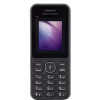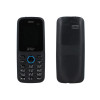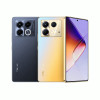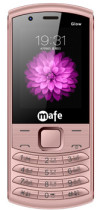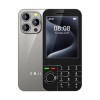
In this article, we are presenting a detailed specification review about three budget-friendly yet power-packed smartphones. The players are Xiaomi Redmi 4, Panasonic Eluga Ray and the Nubia N1 Lite. The three mobile phones are priced under INR 8000 and come in the budget segment, through this detailed review, we can explore how worth are these mobile phones.
Design and Display
The Chinese company Xiaomi have made a distinct path in the Indian smartphone market with their array of low budget high specification oriented mobile phones, and this equation matched with the likes of the prospective buyers in India. The success of Redmi series turned many smartphones manufacturers to try out the same idea to prevail in the market.

Xiaomi has done many tweaks and improvement in the design of Redmi 4 over their previous products. Redmi 4 comes with a premium metal casing, and looks premium and classy, making it the best-looking smartphone in the budget segment. While the ZTE is also trying to have a go in the budget segment with their Nubia Lite series, but they offer only a polycarbonate body with a metal strip on sides in their Nubia N1 Lite, which is a slight turn off in design point with the likes of the metal finished Redmi 4 and the premium metal class appearance showcased by Panasonic with their Eluga Ray.

In terms of display, Redmi has a 12.7cm (5inch )HD display with a 296 pixels density combined with Corning Gorilla Glass protection, while the Nubia offers a slightly big display of 5.50-inch with 267 pixels density, which is slightly low compared to the pixel density of Redmi 4, and the Eluga ray matches with the Redmi 4 with a 720 x 1280 pixels (~294 PPI pixel density), which is remarkably good for a 5.0 inch smartphone.
Camera and Video Recording
In the camera section, Redmi offers a 13MP Rear camera with PDAF for 0.3s fast focusing, and the Eluga Ray also offers a 13 MP, autofocus camera having a LED flash. While the Nubia is down with a very low 8 MP shooter yet with a Dual-LED flash.
In the video recording feature, Redmi 4 and Nubia N1 Lite records video with a full HD quality of 1080p@30fps while the Eluga records only with 720p@30fps. In the front facing camera section, Redmi 4 comes with 1080p front-facing camera with 5 MP, but both the Nuba N1 Lite and the Panasonic Eluga Ray scores this section with a 5 MP and an added LED flash which gives an edge over the Redmi 4.
Processor, RAM and Operating System

Xiaomi powered their Redmi 4 with a powerful Qualcomm MSM8940 Snapdragon 435 Octa-core Cortex-A53 processor at 1.4 GHz with GPU Adreno 505, while the Nubia N1 Lite is backed by a Mediatek MT6737 Quad-core 1.5 GHz Cortex-A53 processor with GPU Mali-T720MP2, and the Eluga Ray have a Mediatek MT6737 Quad-core 1.3 GHz Cortex-A53.
In the processor section, Redmi 4 wins the race with an Octa-core processor which is a huge advantage while comparing the other two smartphones in this section. These three mobile phones match with the operating system as they are running Android 6.0 (Marshmallow) out of the box and are dual SIM with 4G technology. But the Eluga Ray have a more advantage here with the dedicated memory card slot with an expansion of up to 64 GB as compared with the hybrid slot of the Redmi 4 and the N1 Lite. But memory slots of the hybrids support an expansion of up to 128 GB which is also a marginal advantage over the Eluga Ray.
Internal Memory and other features
The Xiaomi Redmi 4 and the Nubia N1 Lite have an internal memory of 16 GB and have 2 GB of RAM, while the Panasonic Eluga Ray have 16 GB internal memory with a 3 GB RAM, which is an added advantage.
The Redmi 4 and N1 Lite and Eluga Ray have Fingerprint scanner for higher security and also provides fast unlocking, the Redmi 4 and the N1 Lite have a rear-mounted fingerprint scanner as compared to the front-mounted fingerprint scanner of the Eluga Ray. The three mobile phones support USB OTG and have latest Wifi technology-Wi-Fi 802.11 a/b/g/n, with Wi-Fi Direct and hotspot, and have the basic features like the Bluetooth and FM Radio, ambient light sensors, and compass.

Battery
The Panasonic Eluga Ray have a Li-Ion 4000 mAh removable battery, which is an added advantage over the Redmi 4 which have a Non-removable Li-Po 4100 mAh battery and the N1 Lite that provides a low 3000 mAh Non-removable battery in this segment.
Verdict
While the three mobile phones provide enough features for the budget conscious buyer, there are some variations when the prices of the three mobile phones are considered. Redmi 4 and the Nubia N1 Lite is priced at a starting of INR 6,999, while the Panasonic Eluga Ray is slightly priced above the two mobile phones with INR 7,999. Redmi 4 is available through flash sale only and is available in gold and black color. Nubia N1 Lite and Eluga Ray can be bought online at any time. Nubia N1 Lite is available only in the black shade while the Eluga Ray comes in multi colors Rose Gold, Space Grey, and Gold.
Redmi 4 may look catchy with the 2.5D curved glass and a premium metal casing that provides it a classy look, while the Eluga Ray may surprise you with their Arbo virtual buddy and the freedom of a dedicated memory and SIM slots, and on the other hand, Nubia N1 Lite may look dull with a polycarbonate body but it's worth the rough use that comes handy as compared to a metal housing smartphone. Even though the specification, looks and price favor with the Redmi 4, the final verdict remains in the hands of the user as all these smartphones are worth a shot and depend on the preference one have to go with.

